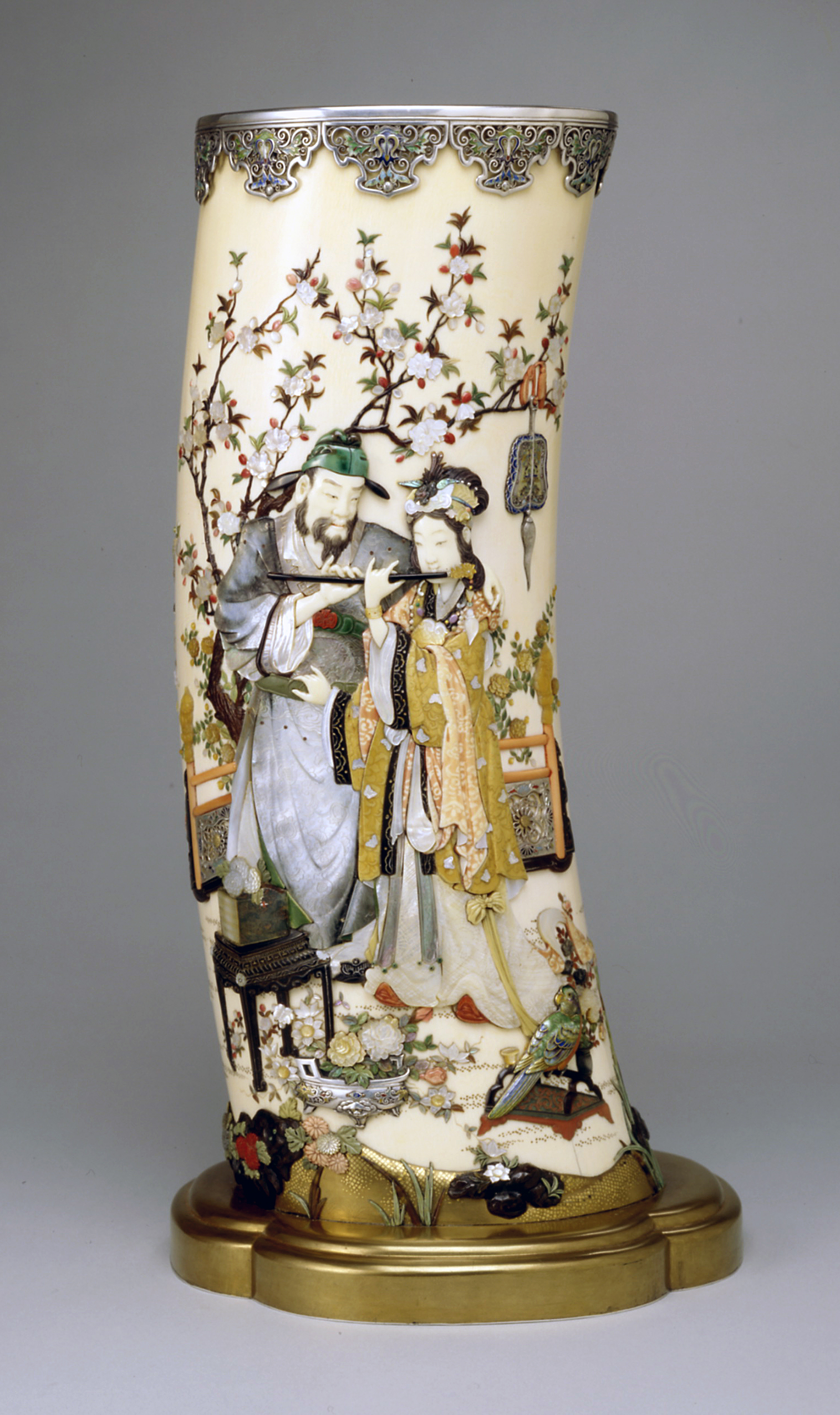 Print Page
Print Page
 Print Page
Print Page
Location: Japan
Materials: kinji, shibayama, enamels, ivory, silver
Dimensions: 90 x 38 cm (each)
Accession Number: L 163
Other Notes:
Paired models of richly caparisoned elephants bearing decorated sections of ivory on their backs and resting on separate stands. The elephants of sculpted wood, covered with Kinji lacquer and inset with a pair of silver tusks each. The elaborate underclothes and strappings encrusted in hardstones and silver, embellished with designs in cloisonné enamel. The animals bear highly ornate saddles with ho-o birds among floral scrolls on one side, and shishi among peonies on the other, also in cloisonné enamel, on grounds of geometric patterns in gold and silver togidashie. Silver tassels hang from the bottoms, realistically portrayed as though gently swaying as the animals walk.
The saddles surmounted by foliate stands on which rest curved sections of ivory tusks, decorated with two separate scenes on each tusk. The tusks decorated with Shibayama-style encrustations, with gold hiramakie, takamakie, and kirikane towards the bases. The upper rims and feet of the tusks edged with silver, with ogival panels decorated with floral scrolls in enamels pinned to the necks. The underside of the feet of nashiji. The elephants stand on black lacquer stands covered with figured silk on their upper surfaces.
One of the several artists involved in its creation, in addition to Kaneko, whose signature appears on many of the different components, was probably Hiratsuka Mohei, an enameller specializing in translucent enamels on openwork silver.
Bibliography:
O. Impey, M. Fairley, J. Earle (eds.), Meiji No Takara: Treasures Of Imperial Japan: Lacquer Vol II, London 1995, cat. 176.
J. Earle, Splendors of Imperial Japan: Arts of the Meiji period from the Khalili Collection, London 2002, cat. 150, pp. 226–7.




